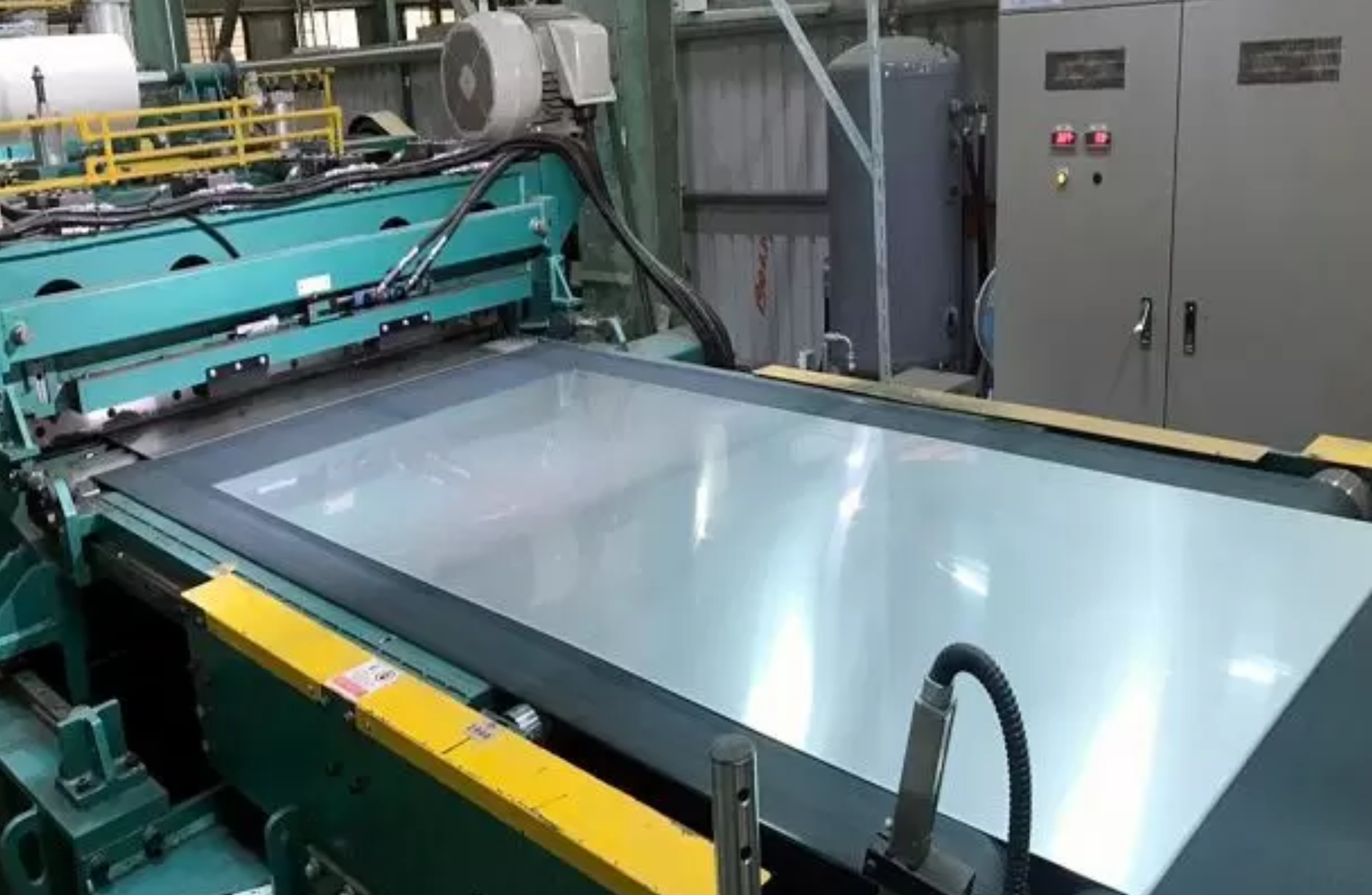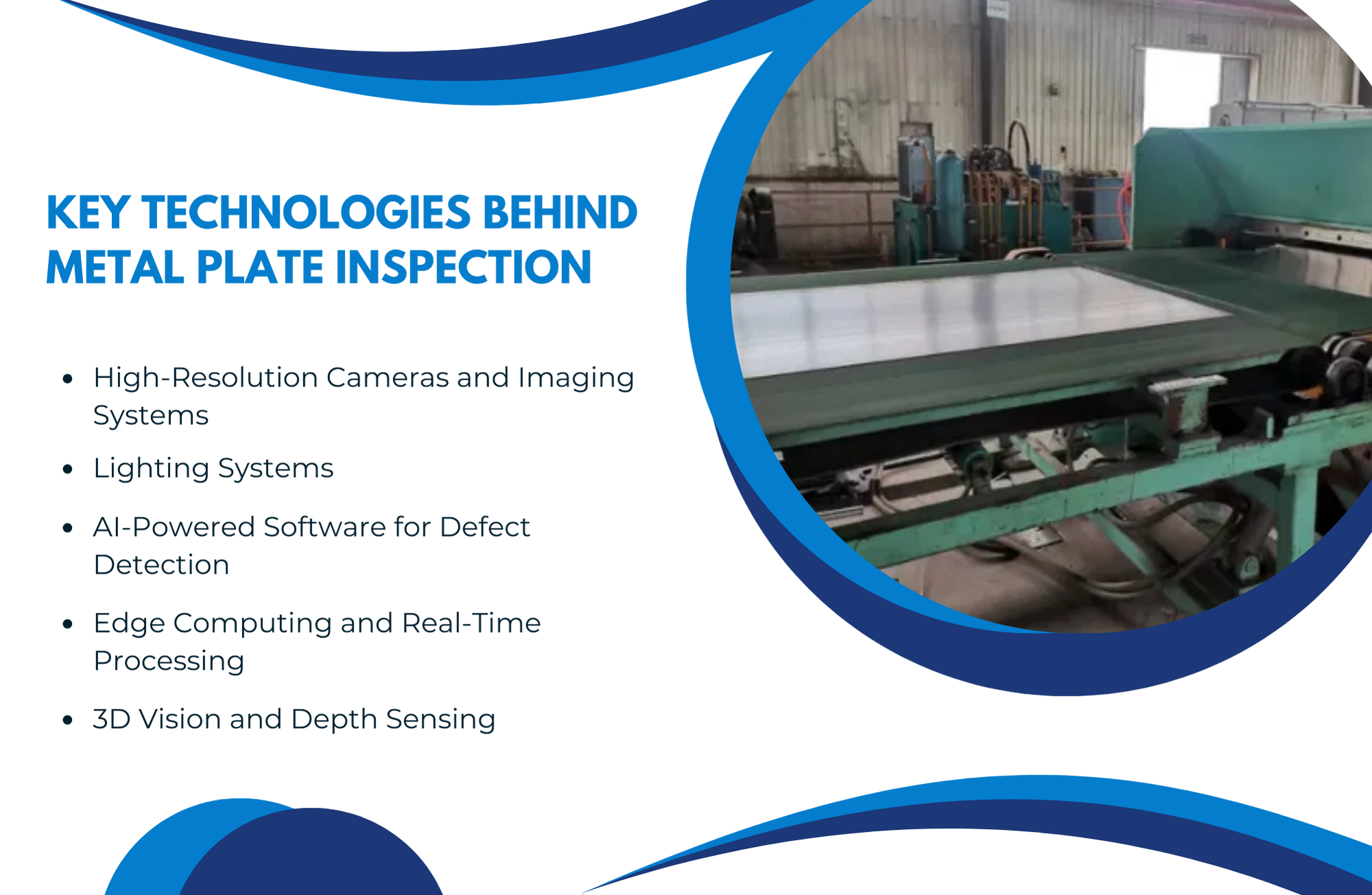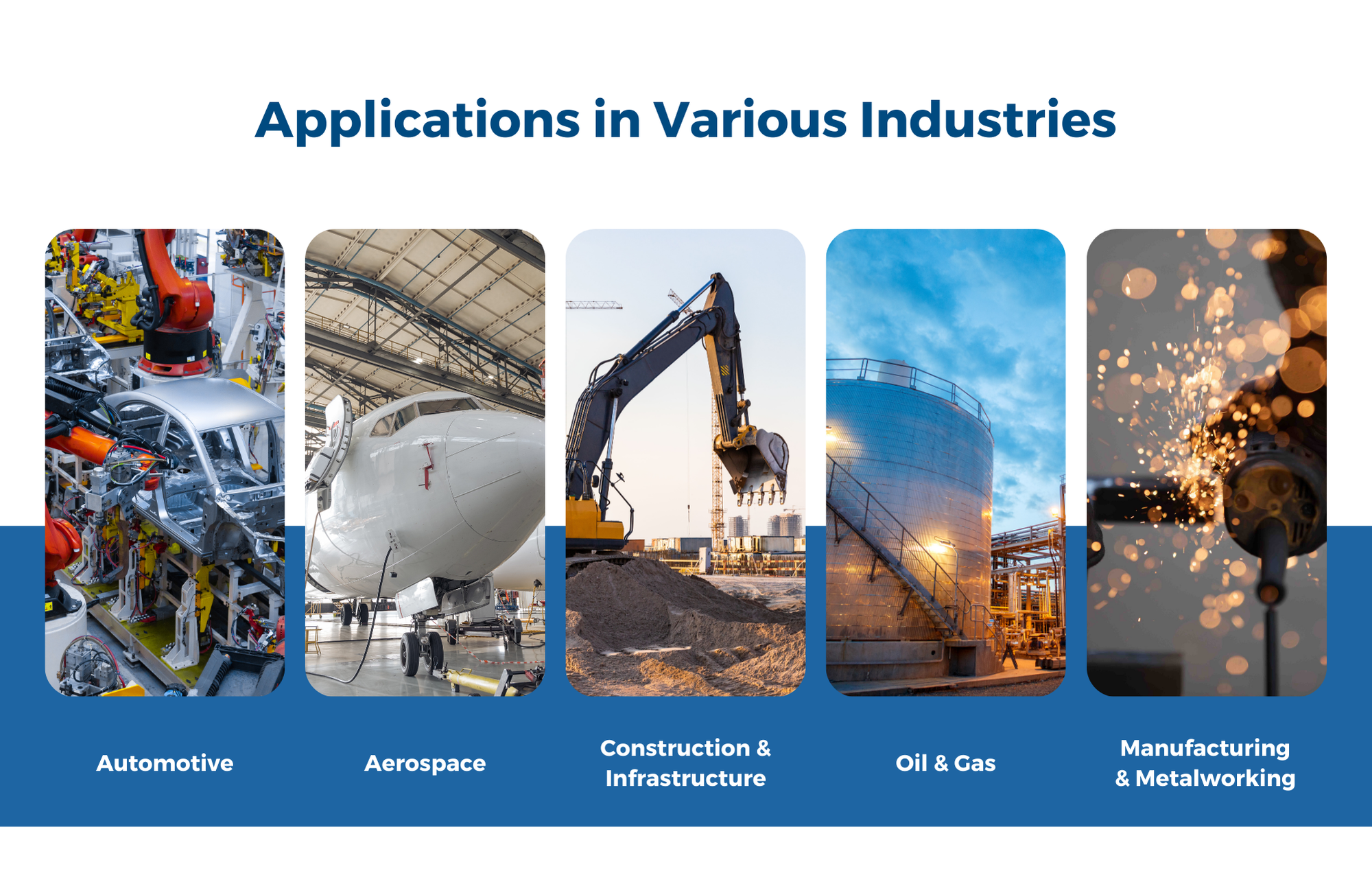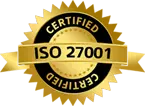Metal Plate Inspection Using AI powered Machine Vision System
Published on: Feb 03, 2025

Written by: Content team, Intelgic
Metal Plate Inspection Using Machine Vision AI
Metal plates are foundational elements in various industries, from manufacturing to aerospace. They serve as key materials in the production of machines, vehicles, and infrastructure. Ensuring that these plates are free of defects is paramount for both safety and performance. Traditional methods of inspection, such as manual checks and basic visual examination, can be slow, inefficient, and prone to human error. However, with the advent of machine vision and artificial intelligence (AI), metal plate inspection has reached new heights of precision and efficiency.

Common Defects on Metal Plates
Metal plates, when subjected to various manufacturing processes such as cutting, welding, or rolling, may develop a range of defects. These defects can affect the material's strength, appearance, and overall quality. Identifying and rectifying these defects early in the production process is essential to ensure the final product meets the required standards. Some common defects found in metal plates include:
- Cracks: Deep surface or internal fractures that weaken the plate, caused by thermal stresses or material fatigue.
- Scratches: Shallow surface marks from abrasive contact, affecting appearance and, in some cases, causing corrosion.
- Dents: Indentations or depressions caused by impact, distorting the plate’s shape and alignment.
- Corrosion: Chemical reactions with moisture or oxygen, leading to rust and material degradation.
- Pitting: Localized corrosion creating small cavities, which reduce strength, particularly in stainless steel.
- Warping: Bending or twisting due to uneven cooling or mechanical stress, affecting flatness.
- Inclusions: Foreign particles trapped in the metal, weakening the material and leading to cracks.
- Surface Oxidation: Excessive formation of oxide layers on the surface, causing damage or discoloration.
- Surface Roughness: Irregularities or rough textures from improper grinding or cutting processes.
- Blistering: Raised areas due to trapped gas bubbles, often from casting or welding issues.
- Weld Defects: Issues like cracks or incomplete fusion in welded joints, weakening structural integrity.
- Holes/Porosity: Small voids or holes from trapped air or gas during casting or welding.
- Edge Defects: Uneven or rough edges from improper cutting, affecting assembly.
Key Technologies Behind Accurate and Reliable Metal Plate Inspection
Machine vision systems for metal plate inspection leverage various technologies that enable them to perform precise and reliable defect detection. The primary technologies employed include:
- High-Resolution Cameras and Imaging Systems: Advanced Machine Vision cameras capable of capturing images in high resolution are essential for detecting minute defects. These cameras are often paired with specialized lenses to ensure that even microscopic defects on the metal plate’s surface can be captured clearly. The cameras are typically set up at multiple angles to provide a comprehensive view of the plate.
- Lighting Systems: Proper lighting is crucial for enhancing the visibility of surface defects. Specialized lighting setups, such as polarized light, structured light, or line light, are used to illuminate the metal plates in specific ways. This helps to reveal flaws that might otherwise be hidden in uniform lighting conditions. The choice of lighting depends on the type of defect being detected and the characteristics of the metal surface.
- AI-Powered Software for Defect Detection: AI and machine learning (ML) algorithms form the core of the defect detection process in metal plate inspection. The AI-powered software is trained on extensive datasets of metal plate images, encompassing both defect-free and defective examples. Through this training, the software learns to recognize patterns, classifying defects based on attributes like size, shape, and location. As the system processes more data, it continuously improves, becoming increasingly proficient at detecting even the most subtle and complex defects.
- Edge Computing and Real-Time Processing: Edge computing enables real-time processing of images without the need to send large amounts of data to a central server. This reduces the latency in defect detection and allows for immediate decision-making. In metal plate inspection, edge computing ensures that any detected defects can be flagged and addressed right away, streamlining the inspection process.
- 3D Vision and Depth Sensing: Advanced machine vision systems also use 3D vision or depth-sensing technology. This allows the system to capture not only the surface details of the metal plate but also its shape and form. By understanding the depth and contours of the plate, the system can detect issues like warping, bending, or misalignment, which are critical in industries where dimensional accuracy is crucial.

Comprehensive Guide to the Metal Plate Inspection Process
The process of metal plate inspection using machine vision AI typically follows these stages:
- Image Acquisition: The first step in the inspection process is capturing high-resolution images of the metal plates. This is done using strategically placed cameras and lighting systems. Depending on the system setup, multiple images may be captured from different angles or positions to provide a comprehensive view of the plate’s surface.
- Pre-Processing: Once the images are captured, they undergo pre-processing to enhance their quality. Pre-processing techniques include noise reduction, contrast adjustment, and edge detection, which help to make the defects more visible and easier to analyze.
- Feature Extraction: After pre-processing, the machine vision system extracts relevant features from the images. These features can include edges, textures, shapes, and patterns that are associated with defects. The system identifies these features by comparing the captured images with known models of defect-free metal plates.
- Defect Detection and Classification: The AI-powered algorithms analyze the extracted features and compare them to a database of known defects. The system classifies the defects into categories, such as cracks, scratches, dents, or other types of damage. Machine learning models continually improve as the system processes more images, allowing for more accurate and reliable detection over time.
- Defect Reporting: After detecting and classifying defects, the system automatically generates a detailed report outlining the nature, size, and exact location of each defect. This report is then sent to the operators or quality control team, enabling them to take appropriate actions such as marking defective plates for rework, rejection, or further inspection.
- Post-Processing and Feedback Loop: The inspection results can be further processed to identify patterns in defects over time. This feedback loop allows for process optimization and enables manufacturers to make adjustments to their production lines to minimize defect occurrence. In addition, the AI system continues to learn from each inspection, improving its accuracy and efficiency with every cycle.
Applications in Various Industries
The ability to detect defects in metal plates quickly and accurately is crucial across a wide range of industries. Some key sectors where machine vision AI is used for metal plate inspection include:
- Automotive: Ensures metal plates meet safety, durability, and appearance standards for parts like body panels and frames.
- Aerospace: Identifies defects in metal plates used in aircraft to ensure safety and prevent catastrophic failures.
- Construction & Infrastructure: Inspects plates used in bridges and buildings, preventing structural issues from defects like corrosion and misalignment.
- Oil & Gas: Detects defects in plates for pipelines and offshore platforms, ensuring functionality in harsh environments.
- Manufacturing & Metalworking: Identifies warping and misalignment early in the production process to improve efficiency and reduce waste.

Intelgic’s Expertise in Metal Plate Inspection
Intelgic has established itself as a leader in machine vision AI technologies, specializing in cutting-edge solutions for metal plate inspection. Intelgic’s metal plate inspection systems are highly flexible and scalable, capable of inspecting a wide variety of metal surfaces, including those with complex geometries and varying textures.
Key features of Intelgic’s metal plate inspection systems include:
Real-Time Defect Detection: Minimizes latency, enabling immediate corrective action and preventing defective products from progressing.
Machine Learning Integration: Continuously improves defect detection accuracy, adapting to new production environments and defect types.
Customization: Tailored solutions for various metal types, plate thicknesses, and surface conditions.
High-Speed Inspection: Optimized for high-throughput environments, ensuring quality without slowing production.
Conclusion
Machine vision AI has transformed metal plate inspection, delivering unmatched precision, speed, and reliability. By integrating high-resolution imaging, advanced lighting, and AI algorithms, these systems detect even the smallest defects, ensuring top-quality standards across industries like automotive, aerospace, construction, and oil and gas. Intelgic leads the way in leveraging machine vision AI to enhance quality control, continually advancing technology to help industries meet the demand for flawless metal products and maintain high safety and performance standards.

